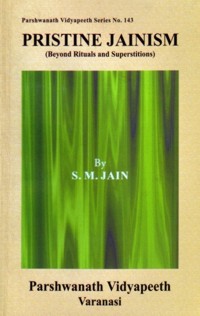In subsequent period of Sukhma there was some decline in forest cover (Kalpavrikshas) because of increasing population and wants of people. By and large the conditions were peaceful and there was no significant degradation in natural environment. With increasing population and rising demands, slowly shrinking resources with resultant competitive greed in next, Sukhma-Dukhma period the effects were visible with soil erosion, declining productivity of forests (Kalpavrikshas) and consequent competitiveness. The perfect peaceful environment was getting stressed. The pressure on natural resources increased beyond the carrying capacity, rejuvenability and sustainability during Dukhma-Sukhma period. Forests were destroyed and productivity of food, fibres etc. from Kalpavrikshas declined considerably. Grasses and other inferior plant species replaced the magnificent trees of numerous varieties fulfilling all the needs of people. It was during this period that agriculture had its birth. More and more forests were cleared, cut and burnt to prepare vast areas for agriculture. The result was increasing erosion and consequent floods, droughts, famines, pestilences and wars. It was with the birth of agriculture that the concept of individual property developed. Earlier all natural resources were common property. Although before the onset of agriculture also when forests started shrinking the people in succeeding periods turned to wiser people known as Manus for advice and demarcation of areas for groups of people or villages was done to avoid and mitigate feuds. Increasing emphasis on agriculture gave a serious set back to maintenance of natural resources as common property. People were more concerned with their individual fields with resultant feuds, wars for extending, protecting the properties and territories.
The present era is Dukhma with grim scenario. The increasing population and rising consumerism with more and more pressure on natural resources is depleting them fast to the extent of eventual annihilation. The increasing frequency of droughts, famines, floods, climatic vagaries, diseases, feuds, crimes, miseries are direct consequences of human greed and erroneous concept of development, which is based on rising index of consumerism. The exploitation of natural resources is so high and rapid that most of forests, minerals, oil etc. will soon be exhausted and with it will crumble down the whole edifice of so-called civilization. To meet the increasing consumerist needs there is more and more industrialisation, throwing out poisonous gases in air, chemicals on land and water, polluting irretrievably these basic life support systems. Water is already scarce. The modern high - tech agriculture with increasing dose of chemical fertilisers and poisonous pesticides is accelerating the serious problem of environmental pollution of land, water and air, endangering even the fertility of land. Our edibles have residual poisonous pesticides and are slowly poisoning the entire biome including man, fish, birds, cattle and other animals. History will judge the present generation as most cruel and criminal as it will exhaust most of natural resources leaving nothing or very little for future generations. Morality demands that the present generation should limit its size and requirements to the carrying capacity and rejuvenability of natural resources. There is much talk of sustainability but there is no concrete effort. The prescribed code of conduct in Jainism stressing frugality of wants etc. can only ensure it as will be illustrated in later chapters.
The next Dukhma-Dukhma period will be much worse because of more and more pressure on natural resources and their depletion. The end of this period will be that of Avasarpini (Descending Cycle). It will be followed by Utsarpini (Ascending Cycle), starting first with repeat of Dukhma-Dukhma followed by Dukhma, Dukhma-Sukhma, Sukhma-Dukhma, Sukhma and ending with Sukhma-Sukhma, completing the whole cycle of Avasarpini-Utsarpini. The new cycle will start in descending order with repeat of Sukhma-Sukhma and in the order mentioned above and it will continue repeating over and over again.
 S.M. Jain
S.M. Jain
